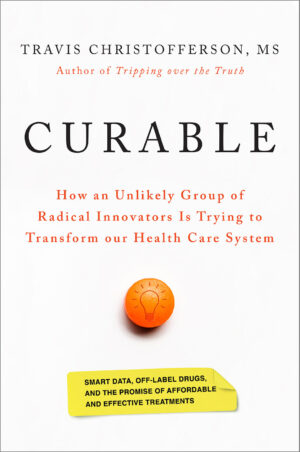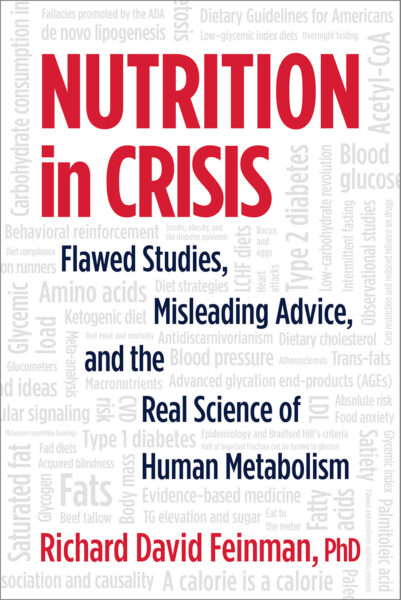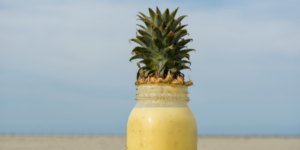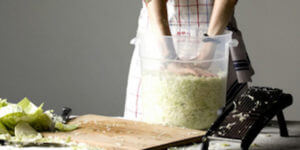DIY Fecal Transplant – Pretty Close to Miraculous
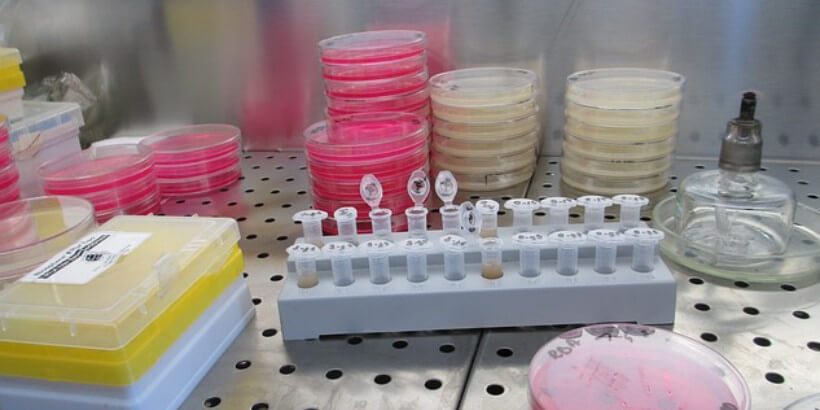
After suffering from an antibiotic-resistant infection in her bowels, Catherine Duff contracted Clostridium difficile (C. diff). This bacteria can result in damage to the colon and intestines, which may lead to other fatal complications. Though there are remedies to cure C. diff, it doesn’t work for everyone.
Fecal transplants are a relatively new procedure that transfers healthy feces—made up of water, fiber, bacteria, fats, salts, and mucus—into the colon of someone who needs a probiotic ecosystem of good bacteria. This procedure has a high success rate, yet few doctors are willing to perform it.
The following is an excerpt from Curable by Travis Christofferson. It has been adapted for the web.
Prefer audio?
Listen to the following excerpt from the audiobook of Curable.
In fact, Thomas Borody was the Australian doctor Duff’s daughter had run across in her frantic internet search to help her mother in 2012. He was one of only a few in the world performing the procedure for desperately sick C. diff patients. By now, however, even though the medical community had yet to embrace Eiseman’s therapy, desperately ill patients and their families were finding a way. Do-it-yourself fecal transplant videos had cropped up on the internet. Another online search led Duff’s daughter to an instructional video. The title: “How to Do an At-Home Fecal Transplant.”
Wary of attempting a do-it-yourself fecal transplant, Duff and her daughter presented the idea to a few local physicians in Indiana, but none were willing to try it. Again at a dead end, a desperate Duff and her family turned back to the internet.
Now out of options, Duff faced a simple choice: Do the at-home fecal transplant or, most likely, die.
Her kidneys were shutting down, her colon was inflamed, necrotic, and rotting, and her heart was greatly weakened. It was now or never. The instruction video made the procedure seem remarkably simple: A healthy donor’s fecal sample is mixed in a blender with sterile saline, put into an enema bottle, and then squirted into the rectum. The supplies cost less than fifty dollars. Even though Duff’s gastroenterologist refused to perform the treatment, he had at least agreed to screen her husband, John, as a potential donor.
When John’s test came back clean, the Duffs went back to review the instructional video. They had now fully resolved to take matters into their own hands. In the upstairs bathroom John captured some of his stool in a sterile plastic bag. He then walked downstairs into the kitchen and, after putting on a pair of plastic gloves, followed the video’s instructions on how to prepare the sample. He then took the gloves off and walked upstairs. Duff, who was lying on the bed, turned onto her left side and drew her knees up to her chest as John administered the enema. John had propped the foot of the bed up with a piece of lumber to let gravity help keep the enema in as long as possible. He kissed his wife on the forehead. And then they waited. The whole procedure scarcely took the whole morning.
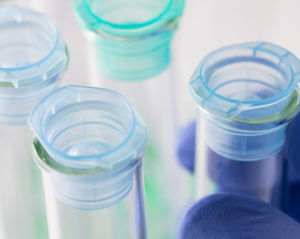 “If you’ve ever made a milkshake, you can do it,” said Michael Silverman, MD, chair of the infectious disease division at the Schulich School of Medicine and Dentistry at Western University in London, Ontario. As graphic as that sounds, it has been estimated that tens of thousands of do-it-yourself fecal transplants have been performed to date. About 10,000 people find the videos that have cropped up on blogs and social media sites like Facebook and YouTube every year. In fact, demand for the procedure has vastly outstripped the few doctors willing to perform it. For every procedure performed by a doctor, many, many more have been performed at home by people like Duff.
“If you’ve ever made a milkshake, you can do it,” said Michael Silverman, MD, chair of the infectious disease division at the Schulich School of Medicine and Dentistry at Western University in London, Ontario. As graphic as that sounds, it has been estimated that tens of thousands of do-it-yourself fecal transplants have been performed to date. About 10,000 people find the videos that have cropped up on blogs and social media sites like Facebook and YouTube every year. In fact, demand for the procedure has vastly outstripped the few doctors willing to perform it. For every procedure performed by a doctor, many, many more have been performed at home by people like Duff.
When she finally had to get up and go to the bathroom, Duff could tell she already felt different. That night she slept soundly. For the first time in months, she didn’t have to rush to the bathroom in the middle of the night. “When I woke up I felt good enough to take a shower and dry my hair and put on makeup and jewelry—things I hadn’t done in months!” Duff’s recovery mirrored the testimonies of many of the DIYers on social media.
The effects were almost instantaneous and enduring.
The handful of doctors performing fecal transplants in their offices observed similar results. “It’s the closest thing to a miracle that I’ve ever seen in medicine,” reported one gastroenterologist. “I’ve been in medicine for a little more than forty years, and I don’t think I’ve ever done anything that has helped as many people and changed as many lives as fecal transplant has,” said Lawrence J. Brandt, a gastroenterologist at the Albert Einstein College of Medicine in New York, and an early pioneer of the procedure. “We’re dealing with something that is pretty close to miraculous.”
Brandt performed his first fecal transplant in 1999. He estimates that at the time he was the only doctor in the United States doing it. By 2012, when Catherine Duff underwent her at-home procedure, maybe a handful of other gastroenterologists had adopted it. But why not more? Strangely, the reluctance of the medical community to embrace the procedure wasn’t necessarily from a complete lack of evidence. A 2011 review paper analyzing over 300 patients with C. diff who had undergone the procedure reported a cure rate as high as 92 percent.
Even so, the number of doctors willing to perform fecal transplants was bizarrely low. The math simply didn’t add up. Thousands of people were dying from C. diff every year. How could modern medicine be failing these patients so badly? Especially considering there was a remarkably effective, low-cost, safe solution the medical community had known about since 1958. The fact that these people didn’t have to die sparked something close to outrage in Duff.
Meanwhile, the FDA had no idea what to do with fecal transplants. In the spring of 2013, a year after her DIY fecal transplant, Duff drove her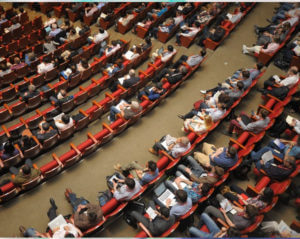 Chevy Tahoe to the NIH campus in Bethesda, Maryland, to attend a workshop. Passing through the security gates, she drove up to Lister Auditorium, a floor-to-ceiling glass building that stood out on the sprawling campus. Even though only a few doctors were performing fecal transplants, because of the meteoric rise in the number of DIYers, the FDA was being forced to reckon with the unusual procedure. The two-day workshop was entitled “Fecal Microbiota for Transplantation.” The goal was to establish some sort of guideline for the procedure.
Chevy Tahoe to the NIH campus in Bethesda, Maryland, to attend a workshop. Passing through the security gates, she drove up to Lister Auditorium, a floor-to-ceiling glass building that stood out on the sprawling campus. Even though only a few doctors were performing fecal transplants, because of the meteoric rise in the number of DIYers, the FDA was being forced to reckon with the unusual procedure. The two-day workshop was entitled “Fecal Microbiota for Transplantation.” The goal was to establish some sort of guideline for the procedure.
Conference attendees filled 150 of the 176 seats in the auditorium. One hundred and forty-nine were taken up by medical doctors, researchers, and affiliates of the CDC or FDA. And a single seat was filled by the only member of the public to attend: Catherine Duff. Wearing a black cardigan sweater, she sat in the back row. The 149 experts were there to make a circumspect evaluation of the procedure—the benefits and risks. Fortuitously, there was fresh evidence to consider.
A few months prior, findings of the first randomized, controlled trial (RCT) of fecal transplants for C. diff were published in the New England Journal of Medicine.
The results had been stunning.
The trial had randomly assigned patients with recurrent C. diff into three groups: One group received a fecal transplant, and the other two groups received antibiotics alone, or antibiotics with bowel lavage. The trial was initially designed to include 120 patients, but it was stopped after only 43 patients had been treated.
The doctors stopped the trial as soon as they saw that the fecal-transplant patients had a cure rate of 94 percent while the antibiotic group’s cure rate was less than a third. In light of these results, the investigators considered it unethical to continue the trial and began administering fecal transplants to the antibiotic group. The author’s conclusion wasted few words:
“The infusion of donor feces was significantly more effective for the treatment of recurrent C. difficile infection than the use of vancomycin.”
Recommended Reads
Recent Articles
Garlic mustard: while known as “invasive,” this plant can be consumed in its entirety and has great nutritional value. Plus, the garlic-flavor is a perfect addition to any recipe that calls for mustard! The following are excerpts from Beyond the War on Invasive Species by Tao Orion and The Wild Wisdom of Weeds by Katrina…
Read MoreMany know the effects of catnip on our feline friends, but few realize that catnip has medicinal effects for humans. From stomach aches to reducing fevers, catnip is a versatile herb with many benefits. The next time you grow this plant for your cat you may end up taking a few cuttings for yourself! The…
Read MoreWhether you’re looking to replace your end-of-the-day cocktail, relax before bed, or want something new to add to your tea, this non-alcoholic mocktail syrup base will do the trick. Delicious and all-natural, take a sip of this nightcap mocktail and feel your troubles melt away. The following is an excerpt from Herbal Formularies for Health…
Read MoreSurprisingly, medicine can actually be delicious. This anti-inflammatory smoothie uses natural (and tasty!) ingredients to help reduce inflammation caused by any number of circumstances. The following is an excerpt from Herbal Formularies for Health Professionals, Volume 4 by Jill Stansbury. It has been adapted for the web. RECIPE: Ginger and Pineapple Anti-Inflammatory Smoothie This is an all-purpose…
Read MoreMake your own delicious, healthy, probiotic sauerkraut! Four easy steps are all you need to turn fresh garden veggies into a long-lasting, tangy, pungent condiment. The following excerpt is from The Art of Fermentation by Sandor Ellix Katz. It has been adapted for the web. 4 Simple Steps to Making Sauerkraut The English language does…
Read More

